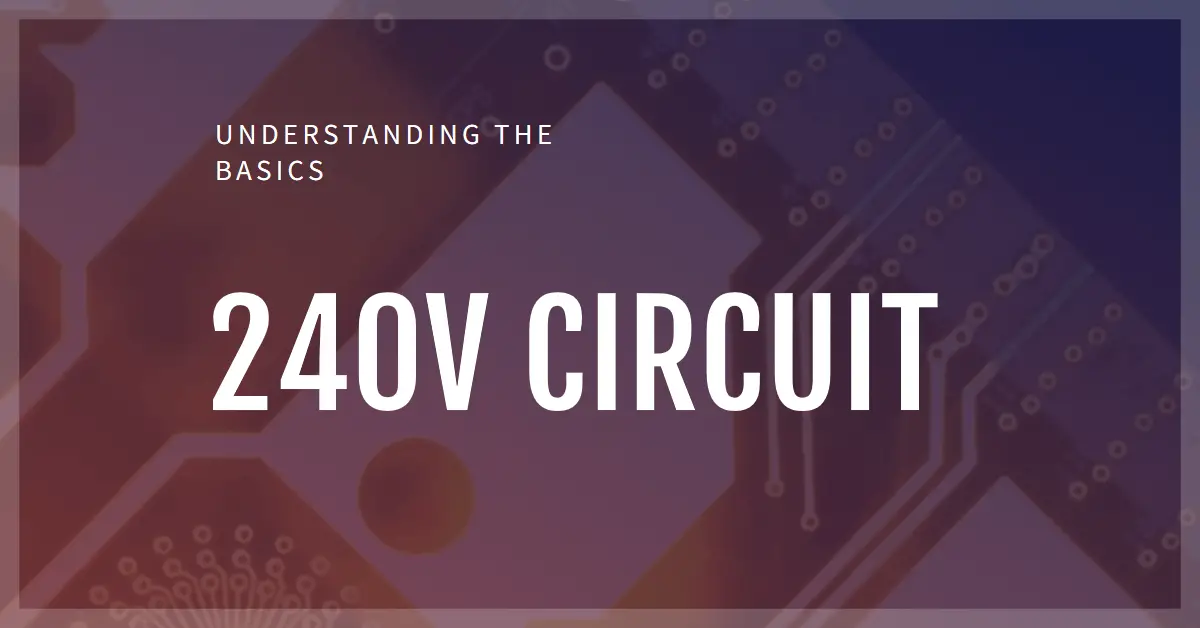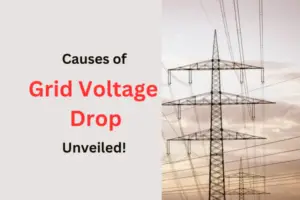In the realm of electrical power, the average American household is familiar with the terms 120V and 240V.
These voltage ratings determine the electrical supply that runs through our homes and appliances. Most households rely on the standard 120V supply for everyday needs, but some high-powered appliances and machinery require a 240V supply.
One intriguing aspect of 240V systems is the absence of a neutral wire, which is commonly found in 120V circuits.
240V electrical systems do not need a neutral wire because they utilize a balanced load distribution and split-phase wiring, allowing them to operate efficiently without requiring a neutral connection.
In this article, we’ll explore the reasons why 240V systems do not require a neutral wire and how they operate efficiently and safely.
Understanding 240V Electrical Supply
Before delving into the reasons for the lack of a neutral wire in 240V systems, let’s first grasp the basics. Voltage ratings are essentially the measure of electrical potential difference between two points.
In the USA, standard residential electrical systems are supplied with 120V, while some specific outlets, such as those for large appliances or industrial machinery, provide a higher voltage of 240V.
Anatomy of a 240V Circuit

To understand why a neutral wire is unnecessary in 240V circuits, it’s essential to grasp the components of such a system.
A 240V circuit consists of two “hot” wires and a ground wire. Unlike 120V circuits, where a neutral wire is used to complete the circuit, 240V circuits rely on a different setup to efficiently distribute the electrical load.
Why 240V Does Not Need a Neutral
Balanced Load Distribution
The primary reason why 240V circuits do not require a neutral wire lies in their balanced load distribution.
In a 120V circuit, electrical appliances draw power from one hot wire and return it through the neutral wire.
However, in a 240V circuit, the load is distributed evenly between the two hot wires. When the load is balanced, the currents in both hot wires cancel each other out, eliminating the need for a neutral wire.
Imagine a simple analogy: think of two people carrying a heavy load together. If both individuals carry equal weight and walk at the same pace, the overall load is balanced, and they can easily move forward.
This concept applies to a 240V circuit, where the load is shared equally between the two hot wires, making the electrical distribution efficient.
Utilizing Split-Phase Wiring
Another key feature of 240V systems is split-phase wiring. This innovative technique enables the generation of two 120V supplies, with a phase difference of 180 degrees between them.
Each phase supplies power to different appliances or outlets. Appliances that require 240V power are connected between the two hot wires, effectively utilizing the 240V potential.
Safety Measures and Grounding
You might wonder how a 240V system ensures safety without the use of a neutral wire. The answer lies in grounding.
Grounding is a vital safety measure that protects against electrical faults and minimizes the risk of electric shocks.
In a 240V system, the ground wire serves as a safety pathway for any stray currents or faults. It’s important to understand that the ground wire is distinct from the neutral wire, as its primary purpose is safety rather than completing the circuit.
Advantages of 240V Systems
Increased Efficiency
One of the significant advantages of 240V systems is their increased efficiency. Due to the higher voltage, the current required to deliver the same amount of power is lower compared to a 120V system.
Lower currents mean reduced power losses during transmission, resulting in more efficient energy usage.
Read also my article: Power Play: Unveiling the Efficiency Battle: 110v vs. 220v AC
Accommodating Higher Loads
240V systems are well-suited for heavy appliances and industrial machinery that demand more power.
They can handle larger loads without overburdening the circuit, making them ideal for tasks like electric vehicle charging or running power-hungry equipment.
Comparing 240V and 120V Systems:
The comparison between 240V and 120V systems sheds light on their differences and specific use cases. In a 120V system, the voltage is lower, which means that for the same power demand, higher currents are required compared to a 240V system.
This higher current can lead to increased power losses during transmission, making 240V systems more energy-efficient.
120V systems are typically used for standard household outlets and lighting, where the power requirements are relatively lower.
On the other hand, 240V systems offer distinct advantages when it comes to handling higher loads. Appliances such as electric ovens, dryers, and air conditioners often require higher power to function efficiently.
By providing a higher voltage, 240V systems can supply the necessary power without drawing excessive current, thus reducing energy wastage and minimizing stress on the electrical system.
Popular Myths and Misconceptions:
There are misconceptions and misunderstandings surrounding 240V systems that need clarification to present a comprehensive view.
The section on popular myths and misconceptions aims to address and debunk any false beliefs or misunderstandings related to 240V systems.
One common misconception may be that 240V systems are inherently dangerous due to their higher voltage.
However, it’s essential to clarify that the voltage level itself is not inherently dangerous; rather, proper safety measures and grounding mechanisms are in place to ensure the safe operation of these systems.
Another myth could involve concerns about using appliances designed for 120V in a 240V system. It’s crucial to emphasize that using appliances without proper voltage adaptation can indeed be hazardous, but modern appliances designed for 240V power are equipped to handle the higher voltage safely.
By addressing these myths and misconceptions, the article aims to provide accurate information and dispel any unfounded fears or misunderstandings, allowing readers to make informed decisions about their electrical systems and appliance usage.
Conclusion
In conclusion, the absence of a neutral wire in 240V systems is due to their balanced load distribution and efficient utilization of split-phase wiring.
While the concept might be unfamiliar to some, 240V systems have proven to be safe, efficient, and capable of handling high loads.
As technology continues to advance, it’s possible that 240V systems may become more prevalent, offering even greater benefits for households and industries alike.
Want to learn more about electricity? Check my YouTube channel!
Are You An Electrical Engineer or Electrician?
Install my Free On Google Play Now! It’s 100% Free
The staff I recommend (Amazon Affiliate Links to products I believe are high quality):
- Economy 120 Volt/60Hz AC Power Source – Step-Down Voltage & Frequency Converters 1800W
- UNI-T Digital Multimeter Tester UT139C
- 50-Amp Extension Cord for RV “100ft”
- Voltage Stabilizer 110/220v
- Hair Dryer “best selling“
- TOSHIBA EM131A5C-BS Countertop Microwave Ovens
Disclaimer: This contains affiliate links to Amazon products. I may earn a commission for purchases made through these links.


